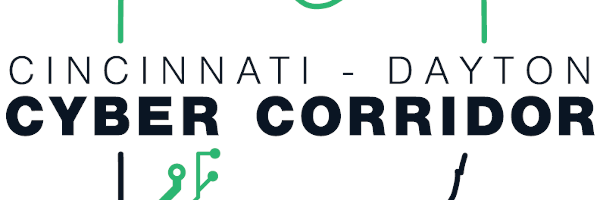Cincinnati-Dayton Cyber Corridor
| Cincinnati-Dayton Cyber Corridor | |
|---|---|

| |
 CinDay Cyber | |
| Team Organizations | University of Dayton Air Force Institute of Technology Wright State University University of Cincinnati Technology First Clark State Community College |
| Team Leaders | Patty Buddelmeyer |
| Participating Municipalities | Cincinnati OH |
| Status | Implemented |
| Document | None |
Description
A regional consortia approach to cybersecurity education and workforce readiness was formed by Southwestern Ohio Council for Higher Education (SOCHE) in cooperation with the Air Force Institute of Technology, the Dayton Development Coalition, University of Cincinnati, University of Dayton, and Wright State University. The coalition has expanded over time to other higher education, K-12 and industry partners. The consortium’s mission is to serve as a resource for education, research and workforce development in cybersecurity and information assurance.
Challenges
The consortium originally formed based upon the urgent need for cybersecurity workforce in this region of the country. Both public and private employers were concerned with the ability to access the workforce they needed from the local area.
Solutions
The Cin-Day Cyber consortium went to work trying to understand the local supply and demand for cybersecurity employees. In addition, the consortium worked to create sustainable partnerships with public and private partners in order to better understand their long-term workforce needs.
Major Requirements
The Cin-Day Cyber consortium began its work with a comprehensive study of regional cybersecurity supply and demand. These data assisted in creation of a Cin-Day Cyber consortium strategic plan that includes building a strong cyber ecosystem across the region, increasing higher education professional development and institutional collaboration, creating sustainable industry partnerships and building cybersecurity pathways from Kindergarten through post doctorate.
Performance Targets
| Key Performance Indicators (KPIs) | Measurement Methods |
|---|---|
|
The methods of measurement will include counting the increase in each Key Performance Indicator through collaboration with Cin-Day partners. |
Standards, Replicability, Scalability, and Sustainability
The Cin-Day Cyber Corridor team is very robust with strong buy-in. The consortium has built a strategic plan focused on meeting required industry standards, replicability, scalability and sustainability. The team meets quarterly to review plans, status and next steps.
Cybersecurity and Privacy
The Cin-Day Cyber consortium partners are all compliant with NIST standards as well as other cybersecurity standards based upon their institutional requirements.
Impacts
The Cin-Day region currently has the highest concentration of IT professionals in the state and Forbes has ranked the region as a top 10 community for engineering jobs. We would like to continue to grow the number of cyber employees across the region.
Demonstration/Deployment
Report on Cin-Day Cyber consortium accomplishments over the last year to include many successes in Higher Education activities, Internships, Conferences, Employment Outreach, and K-12 Outreach.